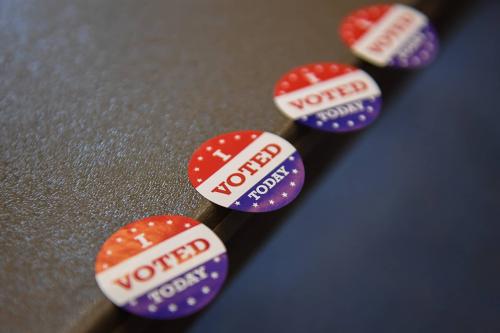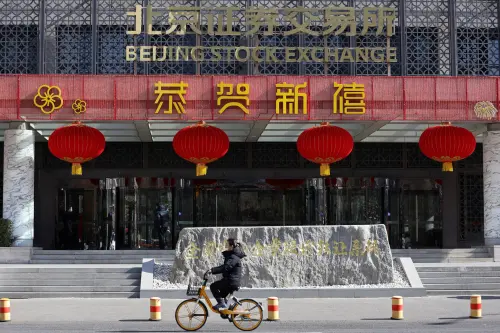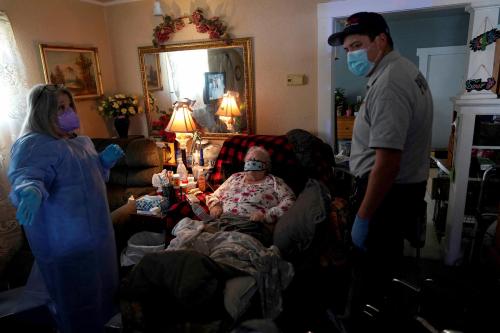Editor’s Note: Bruce Katz and Peter Hamp outline investment opportunities for the U.S. economy as President Obama embarks on his annual State of the Union address. This article was originally published for Ideas Laboratory on February 12, 2013.
At the State of the Union, President Obama should move past fiscal gridlock and refocus attention on job creation and economic growth.
We all know the major challenges facing our country: sluggish GDP growth, a jobs deficit of 10.3 million, and a growing opportunity gap, with the number of people that are poor or near poor in America rising from 81 million in 2000 to 107 million in 2011.
We should all know the solution: invest in a smart, targeted way in growing the productive and innovative sectors of our economy, such as advanced manufacturing.
A confluence of highly disruptive dynamics – rising wages in China, America’s emerging energy independence, the shifting location of production facilities and supply chains, the continued evolution and application of information technology, and new breakthroughs in production technology like 3D imaging and digital fabrication – is fueling a resurgence in advanced manufacturing and raising confidence about America’s economic future.
After thirty years of being told that the U.S. was resigned to be a post-industrial economy, we are suddenly realizing that our future lies in the interplay of production and innovation and of domestic markets and global demand. Manufacturing is an important source of quality, well-paying jobs that offer a significant wage premium – nearly 20 percent higher average weekly earnings that non-manufacturing jobs – and are more likely to provide health care and retirement benefits. Manufacturing also accounts for the lion’s share of the country’s R&D and innovation activity. While the sector comprises only 9 percent of all U.S. jobs and 11 percent of total GDP, it employs 35 percent of engineers, represents 68 percent of private-sector R&D spending, and produces 90 percent of all patents generated in the United States. Further, it generates about 65 percent of all U.S. trade (both imports and exports), making manufacturing a critical component of any strategy to reduce America’s growing trade deficit. In short, a strong manufacturing sector is crucial for America’s ability to compete in the global economy.
Despite the resurgence of manufacturing activity post-recession, the U.S. faces a number of challenges that must be addressed in order for this sector to be a viable engine of long-term growth. Among the most important is the inadequate supply of young workers with the necessary skills for advanced production jobs.
An October 2012 study by the Boston Consulting Group (BCG) found that the current gap between high-skilled manufacturing job openings (e.g., machinists, technicians, etc) and workers with skills necessary to fill them is only about 80,000 to 100,000 unfilled positions – less than 1 percent of the total U.S. manufacturing workforce. Yet, with the average age of high-skilled production workers in the U.S. being 56 years old, BCG estimates that this gap could rise to 875,000 by 2020 as a growing share of the “baby 1 boomer” generation reaches retirement age.
The problem, of course, is that the U.S. education system is not producing enough graduates with the credentials and skills required for many advanced manufacturing jobs. In recent decades, the federal government and many state governments have de-emphasized and under-funded vocational education, sending a clear signal that it is an unequal alternative to the path towards a four-year college degree.
In FY 2011, the federal government spent only $1.1 billion on career and technical education – just 1.7 percent of the Department of Education’s total discretionary budget authority that year and less than 0.2 percent of total non-defense discretionary spending in FY 2011. Further, the money that Washington does invest in career and technical education and workforce development is often too prescriptive and inflexible to meet the disparate demands of state and regional labor markets.
To address these challenges and drive long-term growth, the federal government should initiate a Race to the Shop competition to reform workforce education and skills training support for advanced manufacturing. Similar in many ways to the Obama Administration’s Race to the Top program in the education arena, a $150 million per year Race to the Shop competition would challenge states and metropolitan areas to develop long-term plans, investment strategies, and regulatory and administrative reforms to better address the workforce and training needs their top advanced manufacturing sectors.
An inter-agency Race to the Shop Partnership, composed of representatives from the Departments of Commerce, Labor, Education, Defense, and the National Science Foundation, would review submissions and award annual implementation grants (averaging around $15 million over three years) to the five states and five metropolitan areas with the strongest and most comprehensive plans. In addition to receiving federal grant money, each winning state and metropolitan area would be given increased
flexibility to invest existing federal resources (e.g. Workforce Investment Act or career and technical education funding) in the areas most likely to strengthen their top advanced manufacturing sectors; perhaps, for example, by creating a network of manufacturing high schools or by aligning local community college curricula to fit the varying skill demands of their labor markets.
Even at a time of fiscal austerity, the annual cost of a Race to the Shop initiative is only $150 million. How to pay for it: “cut to invest” by reducing spending on federal programs that are outdated and non-performing.
The return on this relatively small federal investment?
More and better jobs at home, and a higher-skilled workforce to boost American competitiveness in the global economy. That’s something both sides of the aisle can stand and applaud.



Commentary
Op-edThe U.S. Must ‘Race to the Shop’ to Spur Economic Growth
February 12, 2013